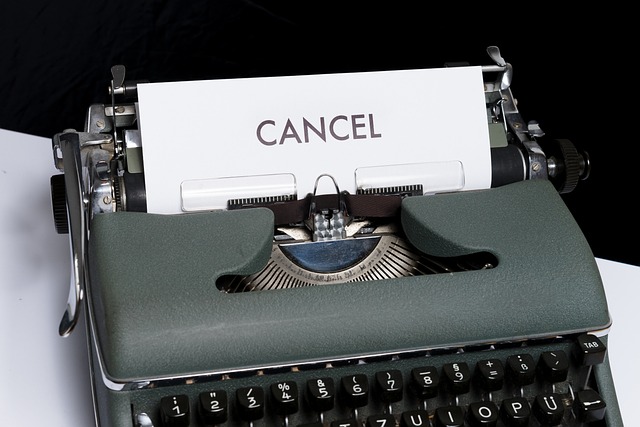There’s something deceptively simple about a subscription. One click, and a new product or service becomes part of your life, an added convenience, a little luxury, or a way to feel more organized or entertained. It’s frictionless by design, removing the need to think twice. What starts as a harmless decision can grow into a pattern that’s difficult to break, especially when the charges quietly accumulate in the background.
Many people don’t realize just how many subscriptions they’ve signed up for until they see the final sum on their monthly statements. Whether it’s streaming platforms, digital news outlets, fitness apps, meal kits, or niche hobby boxes, these recurring expenses can start to feel normal. It becomes easy to rationalize them: it’s only a few dollars, it’s something I might use, or it’s just easier not to cancel. Over time, those small amounts pile up, and the result isn’t always easy to stomach.
How Convenience Clouds Judgment
Subscription services are engineered to be easy to join and harder to leave. Their simplicity often appeals during moments of optimism, believing we’ll read more, work out more, and cook at home more. Signing up feels like making a positive decision. After the initial burst of interest, many of these services fall by the wayside.
That’s where the problem lies. Most people don’t revisit their subscription list regularly. Even when they do, they tend to underestimate how little they’re using some services. This gap between intention and behavior is what keeps unnecessary subscriptions alive. Convenience creates a barrier to canceling, not through effort. It’s by encouraging forgetfulness and minimizing friction.
The Psychology of Subscription Traps
Behavioral economics has long studied the concept of “set and forget.” Once a payment becomes automated, it quickly escapes notice. Companies benefit from this psychological blind spot, offering low entry prices or free trials that roll into paid versions without a clear notification.
The longer a subscription remains active, the more it feels like a default. People start to see it as a fixed cost, not a choice. This mental shift makes it more difficult to recognize when a subscription is no longer useful. It can even provoke anxiety, the idea that canceling might mean missing out or making a mistake.
How Small Fees Add Up
It doesn’t take much to see the damage. One $10 subscription isn’t alarming. Seven or eight of them? That’s a meaningful amount of money each month. Multiply it over a year, and it becomes harder to justify keeping services that aren’t used regularly.
The trap deepens when a service raises its rates. Because the change is small, it rarely triggers action. And with subscription fatigue, when a person has so many subscriptions they can’t even remember all of them, it’s easy for these increases to go unnoticed. It’s a gradual financial leak, not a dramatic loss.
Subscription Guilt and the Shame of Quitting
Some people continue paying for subscriptions simply because canceling them feels like admitting failure. A forgotten language app, an unused meditation platform, or a workout program that was abandoned after two weeks all carry emotional baggage. Instead of canceling, many people keep paying, thinking they’ll return to it someday.
This guilt-driven spending is common and deeply human. People don’t want to let go of potential. Recognizing the difference between potential and habit is crucial. A subscription doesn’t provide value if it’s unused, no matter how good the intention once was.
The Middle Ground Between Use and Waste
Not all subscriptions are bad. Some bring real value, simplify routines, or support hobbies in meaningful ways. They deserve scrutiny. Evaluating them once a year isn’t enough. Like any other spending category, subscriptions should be reviewed regularly, monthly or quarterly, alongside other bills. It’s in this regular review process that many start to notice how subscriptions can impact your finances in ways that aren’t obvious at first. They occupy a strange space between necessity and indulgence. Without proper boundaries, they quietly siphon money from areas that may need it more, savings, emergencies, or goals that require consistent contributions.
The Emotional Toll of Saying No
Breaking the cycle requires more than logic. It takes an emotional decision to say no to something that once felt like a treat or a helpful tool. Canceling a subscription is an act of restraint, a reminder that not every useful thing is useful all the time. It’s a way to reclaim control over spending, not just reduce it.
There’s a subtle satisfaction in making a conscious choice to unsubscribe. It’s not about deprivation. It’s about knowing what serves your current needs and letting go of what doesn’t. This clarity can be freeing, especially in a culture that constantly promotes accumulation and convenience.
When Free Trials Aren’t Free
One of the biggest culprits in unnecessary subscriptions is the free trial. It’s not a gift, it’s a marketing strategy. These trials rely on forgetfulness and hesitation. By the time the trial ends, most people either forget to cancel or feel unsure about whether they’ve had enough time to evaluate the product.
This tactic takes advantage of the same emotional tendencies that drive long-term subscription use. Once someone starts using a service, they’re more likely to keep it, even if it’s just inertia. To avoid this trap, it helps to treat free trials like real purchases. Put reminders on your calendar. Decide in advance whether the service fits your lifestyle.
Building a Healthier Approach to Spending
Saying no to subscriptions isn’t about living with less, it’s about spending with more awareness. A more thoughtful approach can help reduce clutter, stress, and financial uncertainty. It starts with one small decision: ask yourself whether the recurring fee reflects something you use and value.
This habit can spread beyond subscriptions. Once someone becomes more mindful of recurring costs, it becomes easier to question other automatic decisions, brand loyalties, convenience purchases, or default upgrades that no longer serve a purpose.
That shift doesn’t happen overnight. Every time a person says no to a subscription they don’t need, they’re practicing that awareness. They’re building a system of decision-making based on current needs, not past impulses.
Letting go of just one automatic payment can trigger a broader shift in how you spend and think. And in a world full of automatic renewals, that small decision can make a lasting difference.




Leave a Reply